The world is changing, and so are the investment options. Vertical farming can be a good option if you are looking for green investments. In this article, we have listed ways to help you invest in vertical farming.
Did you know the planet has lost a third of fertile land in the last 40 years due to industrialization? With the world population growing consistently yearly, the food security threat has become very real.
Investing in vertical farming could potentially change that. It’s a new agricultural technology that has grabbed the attention of some big corporations and investors worldwide.
As part of the impact investing ecosphere, investing in vertical farming is profitable and ensures food security for future generations. But first, let’s take a minute to understand vertical farming.
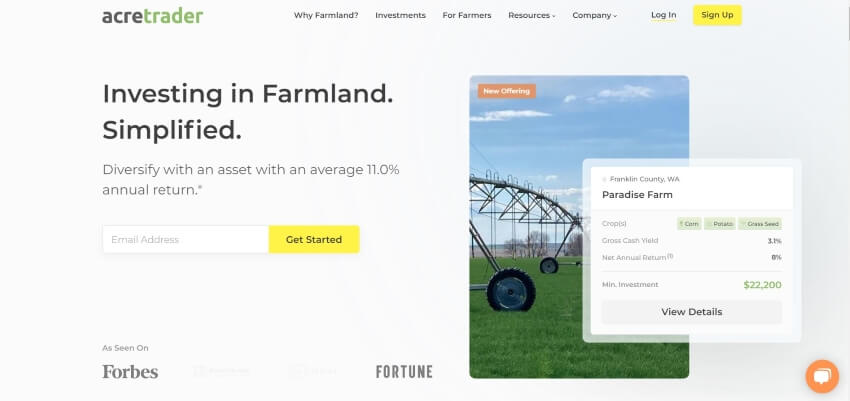
Investors have access to a vast number of options for gaining exposure to this alternative asset with low management fees, secondary-check, an easy-to-use online platform, ability to diversify farmland holdings across the country in minutes.

Investors seeking uncorrelated returns from traditional asset classes such as stocks and bonds can find welcome diversification with farmland. With strong absolute returns and absolute returns, FarmTogether will help you reach your financial goals.
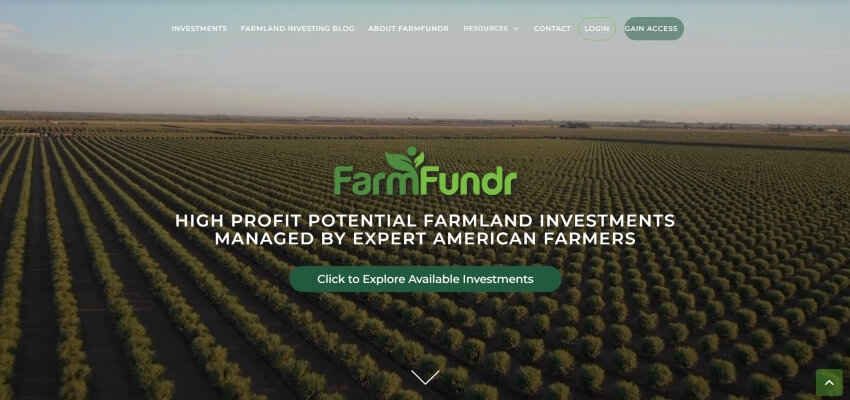
FarmFundr allows you to invest in farmland, a tangible asset that provides a stable and reliable investment opportunity. Our managed agribusinesses are carefully selected, offering investors the chance to diversify their portfolios through agricultural real estate. Invest in farming today!
Table of Contents [show]
What is Vertical Farming?
Vertical farming is the process of producing crops on vertically stacked surfaces in controlled environments.

As opposed to traditional farming, which relies on the availability of land with the right resources, vertical farming can be done anywhere. It maximizes the use of space by growing more food on the same surface area.
These growing areas don’t necessarily need to be in the arable countryside. Much of the vertical farming is happening in urban areas. It relies on CEA or Controlled Environment Agriculture technologies for indoor growing.
You can compare it with traditional greenhouses, but vertical farming goes a step ahead in utilizing space and resources more efficiently. While it has many advantages, the initial costs of setting up such a structure can be quite high.

Many vertical farming companies doing it on a large scale require seed money to set up the so-called vertical farm. However, the long-term output and revenue have the potential to more than make up for this initial investment.
Vertical farming also heavily relies on technology to create optimal conditions for crops to grow. With constant monitoring through sensors and using Artificial Intelligence (AI), vertical farmers can ensure issues are resolved promptly.
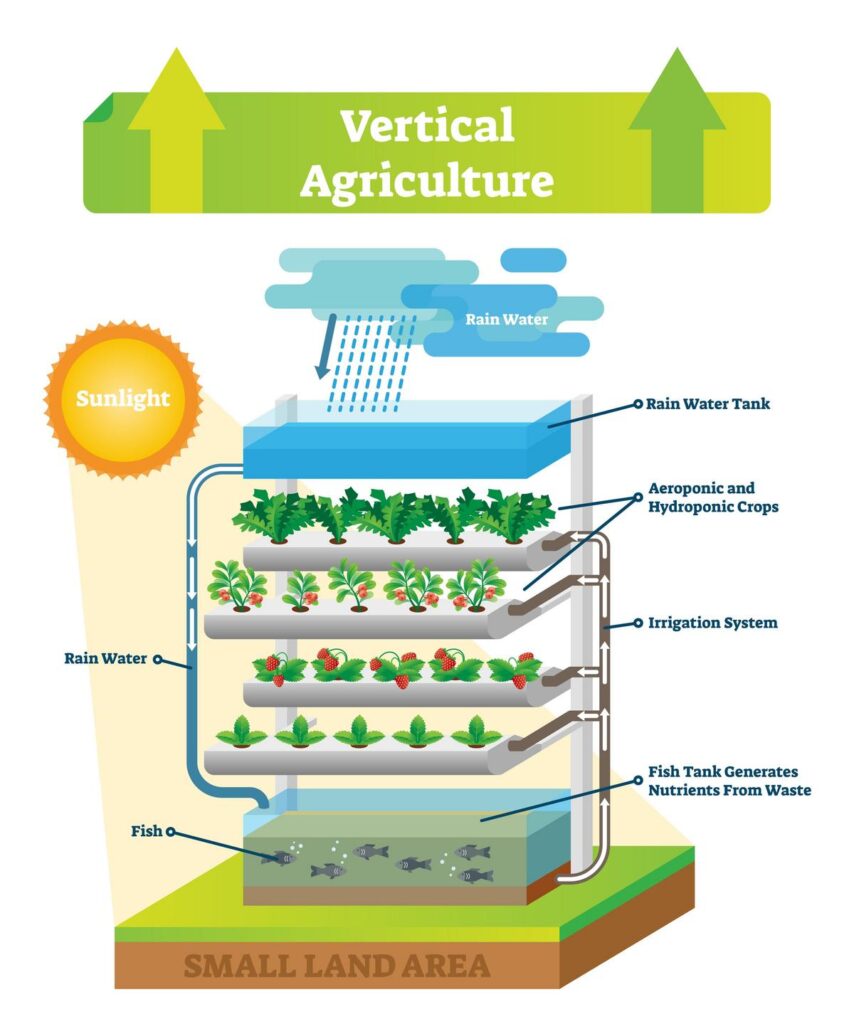
Why Invest in Vertical Farming?
While vertical farming isn’t a new concept, it has only recently become popular. It’s often associated with indoor farming or urban farming.
Many vertical farming companies have become part of the global drive for sustainability and the ever-looming threat of food insecurity. Startups typically require investment, and as a promising technology with a social impact, it has garnered interest from investors from all corners.
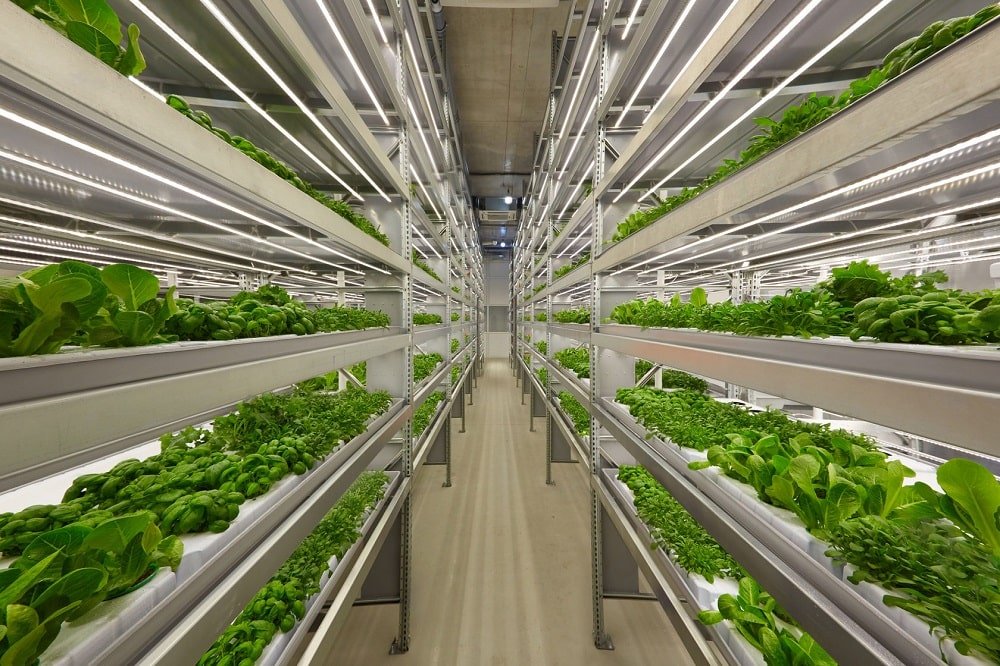
Investing in vertical farming simply makes sense. If you look at the world population data, the numbers are astonishing. According to the United Nations, the World population will grow to a whopping 9.7 billion by the year 2050.
Those 9.7 billion people will need to eat, and if our food production methods are not improved, mass hunger is a real possibility.
It’s clear that with rapid urbanization and a decline in traditional farming, there’s an imminent need for innovative food production methods. Vertical farming seems to have the potential to help meet the food requirements of the future.
Since it’s still in the preliminary phases, there are problems with vertical farming. The main one, of course, is the high costs of setting up such a farm.
Dealing with such problems and making this idea more cost-effective in the long run would require a lot of initial investment. This is why there are many opportunities for investors in this area.
Many big companies like Bayer and SoftBank have invested heavily in vertical farming, indicating promise. For impact investors, the biggest motivator is the social implications of such ventures. Vertical farming is not only sustainable, but it also helps deal with major social issues.
Moreover, the growth rate of the vertical farming industry is predicted to be above 24 percent in the next five years.
See Related: Best Robotics Stocks to Buy Now
How to Invest in Vertical Farming?
Investing in vertical farming isn’t yet flexible, as it’s still a nascent industry. Most startups grabbing headlines and raising millions in seed capital are doing so through venture capital money.
Institutional investors and mega corporations are also heavily pouring money into this field. Generally speaking, where corporations and venture capitalists put their money, the general public also likes to follow suit. There are still ways you can invest in vertical farming directly or indirectly.
Start a Vertical Farm
You could invest money in vertical farming by doing it yourself. You can start your vertical farm with the right equipment and some space.
If you do it yourself, it’s not merely an investment but more of a business. However, given that so many vertical farms have started this way, who is to say it doesn’t have the potential to become big?
Perhaps you could be the next big agri-tech company raising millions in investment. Starting a vertical farm does require initial capital and plenty of it if you’re doing it on a big scale. However, there are examples of people who started at square one.
Infarm started in a small Berlin apartment. The startup’s three founders began their vertical farm in their small apartment, growing spinach, herbs, and lettuce.
They went on to raise $170 million, and their products will now grow in supermarket aisles in Europe and North America. You’ll need a dedicated space in your home or elsewhere and, of course, a lot of equipment.
If you’re just willing to put your money in without doing the hard work, there are other ways.
Equity
You could invest in equity in new vertical farming companies if you’re a high net worth or an institutional investor. New ventures are constantly popping up with innovative ideas, so there can be many exciting opportunities for you to invest in.
With big companies placing their bets on this new technology, we will only see more startups. And it’s not just limited to the US, as this concept is also gaining ground in other regions, especially Europe.
You can be on the lookout for fundraising rounds for such new ventures. That way, you can directly invest in vertical farming and diversify your impact investing portfolio.
Speaking of impact investments, you can also invest through impact investing firms that solely focus on social and economic interests when investing.
There’s always a risk, as with any investment. So, you should thoroughly analyze the company, its technology, and its business model before putting your money in.
See Related: Best Artificial Intelligence Stocks to Buy Now
Vertical Farming Stocks
The most straightforward way to invest in vertical farming is to buy stocks of the big companies involved in this future of farming.
As of yet, few vertical farming companies are listed on the stock exchange. However, it wouldn’t be long until retail investors also get a slice.
One company has recently had its IPO and is now listed on NASDAQ. With major institutional investors backing others, they are also likely to be listed soon. Here are some of the biggest companies in vertical farming you could invest in:
See Related: Solar Farm Income Per Acre: How Much Can You Earn?
AeroFarms
AeroFarms championed its patented ‘aeroponic’ technology, which takes vertical farming to the next level. It aims to achieve the goal of this concept by ensuring maximum productivity with minimal environmental impact.
It launched in 2004, which was still a time when vertical farming wasn’t on investors’ minds. However, to date, they have raised $138 million. There are some big names among the investors.
Vertical farming, in and of itself, is very innovative, but it becomes even more futuristic with aeroponics. As in hydroponics systems, the aeroponics system uses air and mist instead of soil or water.
This is why this production method promises a reduction in water usage by a whopping 95 percent. Here’s a comparison of the hydroponics versus the aeroponics process.
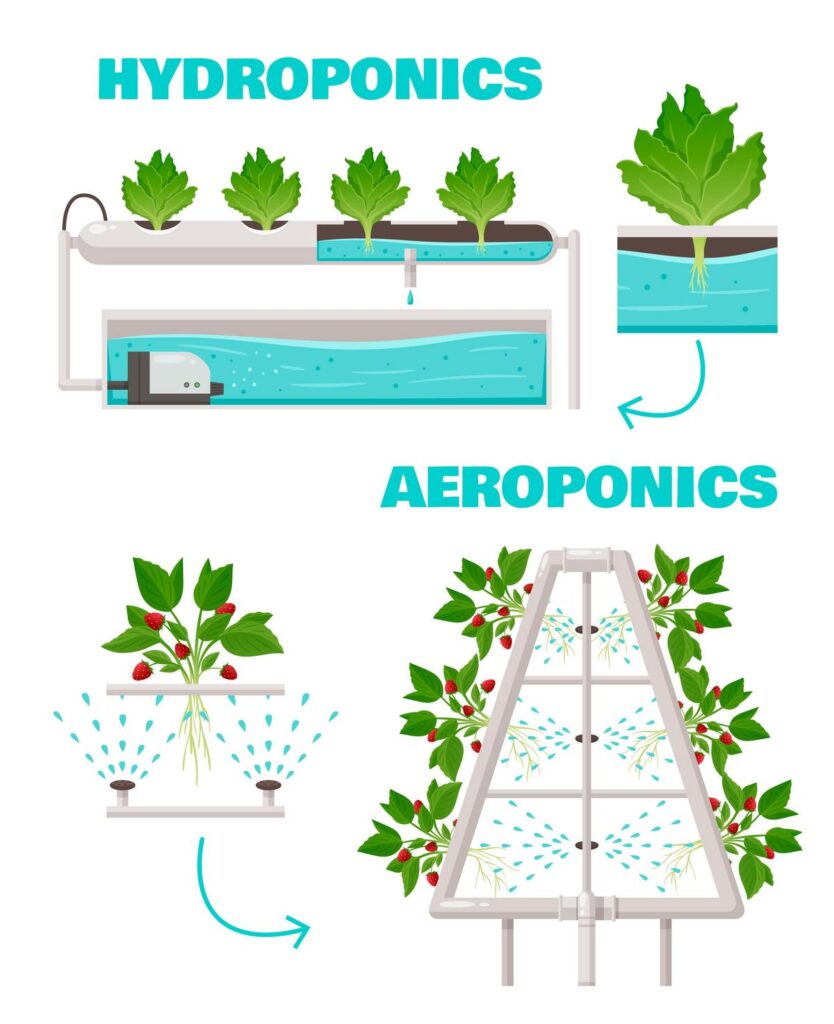
See Related: Best Farmland Investing Platforms
Plenty
Plenty has gotten much attention lately, especially when it raised $226 million, the highest for any vertical farming company.
The San Francisco-based company produces leafy greens using vertical farming technology. Its products have started going into select supermarkets.
It also claims to reduce water consumption by 95 percent, although it’s unclear how. Bezos Expeditions, Softbank, and Innovation Endeavours back the company.
See Related: Best Lithium Stocks to Invest in Today
AppHarvest
AppHarvest has already debuted on NASDAQ when it went public as a special acquisition company. Based in Kentucky, the company currently has three farms in the Appalachian region, producing crops like tomatoes year-round.
They claim to reduce water usage by 90 percent and yield 30 times more food per acre than traditional farms do. Analysts are watching it closely as it’s a real-world example of how retail investors will act with vertical farming stocks. So there’s much to be seen as of yet.
Nevertheless, AppHarvest is your best bet right now to invest directly in vertical farming by buying stocks. They have recently started sending tomatoes to local supermarkets, showing their real application of their idea.
See Related: Similar Stocks Like Tesla (TSLA) to Invest in Today
Bowery Farming
Bowery Farming makes a point of non-GMO and pesticide-free food. It’s not merely an innovative agritech company but one that’s going a mile ahead by ensuring the use of natural, non-modified seeds.
The company has raised over $140 million since its foundation in 2015. You can already see their products on the shelves of supermarkets like Foragers and Whole Foods. So you can expect it to go even bigger in the future.
It’s also targeting the digital market by ensuring fresh produce is delivered to people’s doorstep. That could be a turning point, given how the circumstances have changed so much because of the Covid-19 pandemic. Their quick ‘harvest to shelf’ model benefits urban areas, which can enjoy fresh, organic produce within days.
See Related: Best Real Estate Investment Websites
Iron Ox
Iron Ox is another promising vertical farming venture focusing more on technology. Out of all the major startups, Iron Ox is the most reliant on robotics.
The company has fully automated the farming process, employing AI to monitor the crops and optimize conditions. Its business model is retail-focused, and it has recently started supplying its products to local markets.
As of now, the company has raised $50 million, which is indicative that investors are liking the technology as well as the business model. Their focus is on leafy greens like kale and lettuce, but the variety will likely increase when they perfect their craft.
See Related: FarmTogether Review
BrightFarms
BrightFarms has also raised considerable seed money, with big companies throwing in their hat. According to CrunchBase, the company has already crossed $212 million.
Like many other vertical farming startups, this company is also using hydroponics. They are using mineral nutrient solutions instead of soil to control the nutrient intake of the plants.
Hydroponics has helped become urban farming what it is today, so there’s no surprise that major companies also rely on it. BrightFarms has investments from Walmart, Metro Market, and Giant.
See Related: Best Robo-Advisors for ESG & Sustainable Investing
Stocks Related to Vertical Farming
Another way you could invest in vertical farming is by buying stocks from companies related to it. Equipment suppliers have the potential to go big in the future. The companies making the technology being used by these new ventures already have stocks on the market.
Identifying such companies can be tricky, but it’s definitely worth checking out. As vertical farms grow and become successful, as experts predict, so will the companies related to this industry.
Some examples include Pentair PLC and Koninklijke Philips NV. The former supplies vertical farming companies with water management supplies, while the latter supplies LED lights.
You should look into the companies getting the most funding and check their websites to learn about other companies doing business with them. Are they using their proprietary equipment or getting it from someone else?
If you do a lot of ESG investing, adding these stocks to your ESG stocks wouldn’t hurt. While they are not directly linked with impact investing, their link with vertical farming makes them part of the system. Again, anyone linked with a vertical farm company is also part of the social impact it’s creating.
Related Resources:
- Impact Investing Examples to Know
- How to Measure Social Impact
- How to Invest in Wind Energy
- AcreTrader Review
Kyle Kroeger, esteemed Purdue University alum and accomplished finance professional, brings a decade of invaluable experience from diverse finance roles in both small and large firms. An astute investor himself, Kyle adeptly navigates the spheres of corporate and client-side finance, always guiding with a principal investor’s sharp acumen.
Hailing from a lineage of industrious Midwestern entrepreneurs and creatives, his business instincts are deeply ingrained. This background fuels his entrepreneurial spirit and underpins his commitment to responsible investment. As the Founder and Owner of The Impact Investor, Kyle fervently advocates for increased awareness of ethically invested funds, empowering individuals to make judicious investment decisions.
Striving to marry financial prudence with positive societal impact, Kyle imparts practical strategies for saving and investing, underlined by a robust ethos of conscientious capitalism. His ambition transcends personal gain, aiming instead to spark transformative global change through the power of responsible investment.
When not immersed in finance, he’s continually captivated by the cultural richness of new cities, relishing the opportunity to learn from diverse societies. This passion for travel is eloquently documented on his site, ViaTravelers.com, where you can delve into his unique experiences via his author profile. Read more about Kyle’s portfolio of projects.







